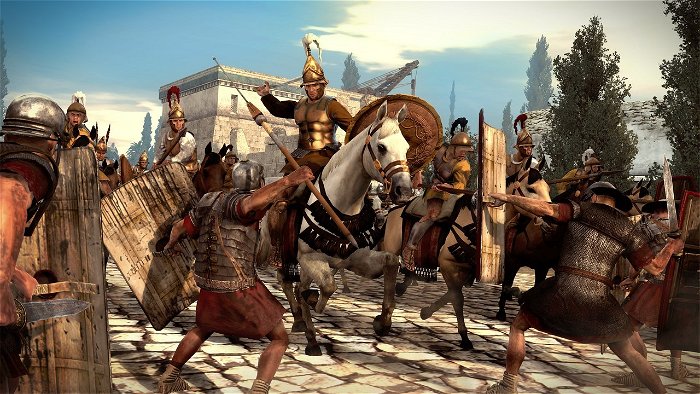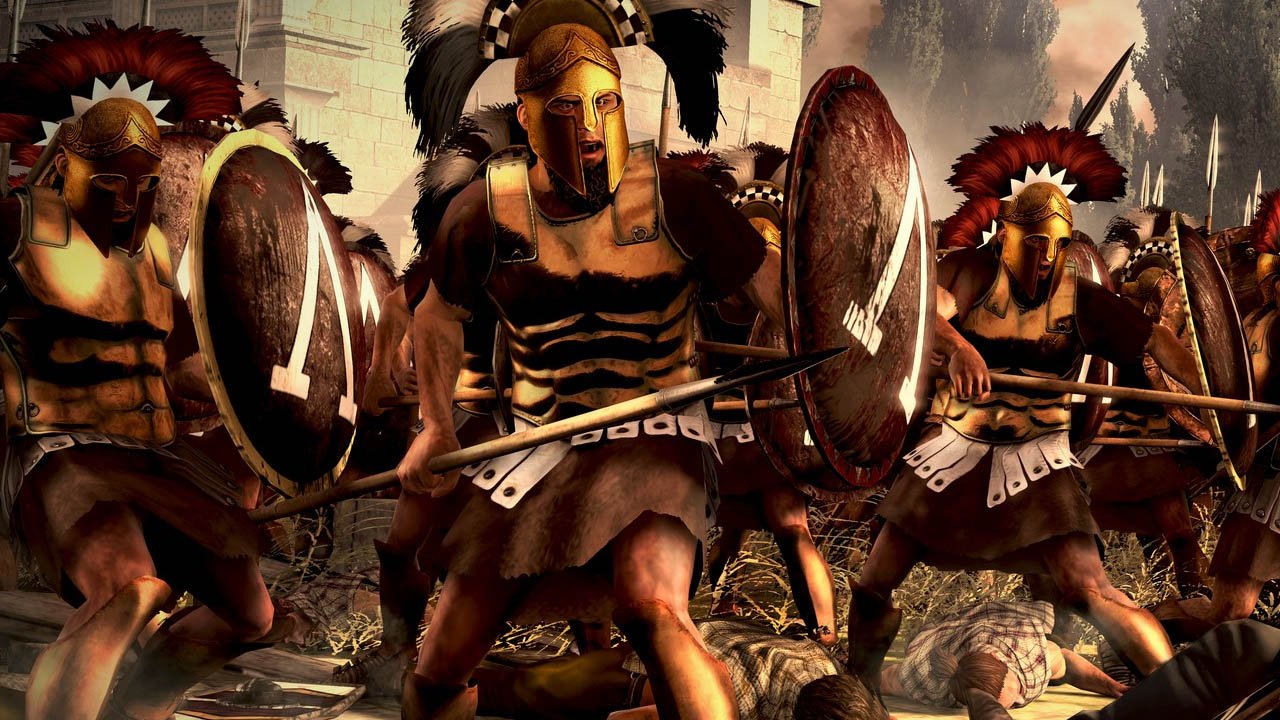A vast Roman army congregates on the plains south of the Etruscan League’s city of Velathri, spears bristling like porcupine quills above the plumed helmets of the tightly packed infantry lines. The Etruscans field ranks of swordsmen. Their boots shake the ground as they approach the Roman forces. Arrows begin raining from both sides, soldiers falling to the ground as their compatriots march onward. From the east the sound of a horn rises within the tree line and a group of cavalry burst, cheering, from the cover of the woods. The Roman horses hit the back of the Etruscan forces, trapping the infantry in a pincer. Metal clashes, men bellow and roar, and the battle ends with the Romans chasing down fleeing enemy.
***

The game’s developer, Creative Assembly, has always been incredibly skilled in creating historical settings that feel truly alive and Rome II is one of the finest examples of this strength. The Total War series trademark blend of turn-based micromanagement with real-time battle is presented extraordinary well. The thunder of horses on the move; the clash of metal during combat; the dusty fields, rolling hills, and grandiose cities and monuments — every bit of the game evokes the Roman Empire wonderfully. This level of attention is evident from the descriptive text used to describe nation states and unit types in the turn-based map down to the detailing on a soldier’s shield during battle.
All of this is to say that Rome II, like all of Creative Assembly’s Total War games, is meticulous in its design. The high level of care that goes into the presentation extends to the gameplay mechanics as well. After completing the tutorial, players are allowed to pick a faction (such as the Romans, Macedonians, Carthaginians, or Egyptians) then get started down the road to conquest. This is accomplished through managing diplomatic relationships, building armies, improving cities, and, of course, fighting wars of expansion or defence. Each of these aspects of the game are highly detailed. Establishing trade networks and military alliances with other factions is a constant balancing act where gaining a friend on one side will very likely make another group upset, something that makes regional politics consistently volatile. The intertwined province/city expansion and technology researching are similarly nuanced. Rome II makes it difficult to waffle between the shape that the player wants their fledgling empire to take, the research trees and building options making it necessary to specialize. A Rome that wants happy citizens, a thriving economy, and a strong army will do far worse than one that concentrates entirely on a single one of these aspects. While it’s entirely possible to become fully rounded by the end of a campaign, the bulk of the game involves a wonderful tension between each of the different facets of empire building and invites multiple playthroughs. The fact that Rome II allows players to win the game not just by achieving military dominance, but by establishing complete economic or cultural superiority, also helps promote diverse strategic approaches.
***
For all it does right, however, Rome II also suffers from some truly awful technical problems. These range from momentum-killing annoyances like the excessively long time the artificial intelligence factions require while taking their turns (the downtime between active play can easily approach three to four minutes) to cosmetic issues such as strangely uneven frame rates, and, worst of all, game-breaking bugs. It’s incredibly frustrating to gain the advantage on an enemy during a real-time battle or set up a multi-step strategy on the world map only to have the game freeze or crash outright. Since Rome II is a game all about minding the details, it’s especially irritating to lose progress after putting time and careful thought into positioning troops, beginning the research of a new technology, or managing diplomatic relationships. These issues seem even worse outside of the single player modes. One co-operative campaign that had just entered into its second hour was a tremendous amount of fun until, out of nowhere, elements of the user interface stopped functioning properly, an enemy turn hung indefinitely, and the game eventually froze outright. While it’s possible to play Rome II in its current state, a great deal of enjoyment is sapped by the presence of glitches and bugs.
This is a real shame, because when the game is working as intended it’s great. Creative Assembly has increased the combat pace, streamlined many mechanical and interface elements in an intelligent manner, and created a world that is staggering in its level of detail. Rome II could be the finest entry in the Total War series to date if it wasn’t plagued by technical problems. Some of these issues will be ironed out with time, either by Creative Assembly or the dedicated fan base the developer has attracted over the years, but it’s difficult to fully recommend a title based on future promise. For now, Total War: Rome II may be tough to appreciate for those who aren’t either extremely patient or willing to look past the many rough edges. There’s a fantastic game just beneath Rome II‘s surface, but the experience needs to be more fully polished and refined before every type of player will be able to see that.
*To read the full review text, see the August/September issue of CGMagazine






